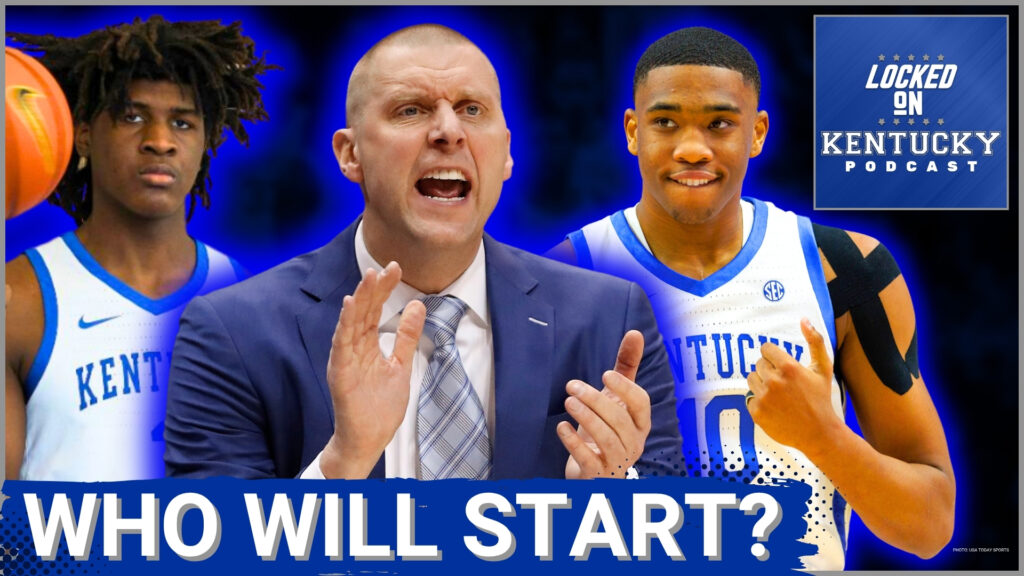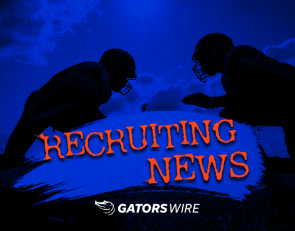
INSANE: Given their amazing depth at center, this is what Kentucky basketball should do.
The Kentucky Wildcats have long been synonymous with elite talent, NBA pipelines, and championship aspirations. Under head coach John Calipari, the program has never lacked top-tier recruits or national spotlight. However, the 2024-25 roster presents a particularly unique situation—insane depth at the center position—and it’s a problem every college basketball coach would love to have.
The Wildcats are overflowing with frontcourt talent. With multiple legitimate centers capable of starting on nearly any Division I team, the question isn’t whether Kentucky has the size and skill—it’s what they should do with it.
Here’s an in-depth look at the Wildcats’ depth at center, the implications for their style of play, and a strategic plan that could propel them back to the top of the college basketball world.
Before crafting a plan, we must examine the sheer talent and depth Kentucky has at the 5-spot.
Aaron Bradshaw (7’0″, Sophomore)
The former McDonald’s All-American returns after an up-and-down freshman season plagued by injuries. When healthy, Bradshaw showcases elite rim protection, soft touch around the basket, and mobility that belies his frame. He’s also shown flashes of stepping out to hit mid-range jumpers, and his defensive versatility makes him a matchup nightmare.
Zvonimir Ivišić (7’2″, Sophomore)
Big Z turned heads late last season with his unicorn-like skillset: a 7-footer with legitimate three-point range, soft hands, and excellent passing vision. His feel for the game is special, and he projects as a modern-day stretch big with a sky-high ceiling.
Joey Hart (6’10”, Freshman – Redshirt Eligible)
While Hart is still developing, his motor and rebounding instincts make him a high-upside project. He could see spot minutes, particularly against smaller lineups, or if injuries strike.
Somto Cyril (6’10”, Freshman)
The raw but powerful Nigerian-born center is a defensive force with exceptional shot-blocking ability and strength. While still learning the nuances of the college game, Cyril could be a defensive anchor in short bursts.
Ugochukwu Onyenso (7’0″, Junior)
A veteran by Kentucky standards, Onyenso has carved a niche as a rim protector and rebounder. His offensive game is limited, but he brings consistent energy and is a natural fit in high-pressure defensive schemes.
Together, this rotation provides elite rim protection, rebounding, mobility, shooting, and depth. Most programs would kill to have even two of these guys. Kentucky has five.
It’s conventional wisdom in college basketball to shrink rotations, especially by midseason. Most coaches aim to find their top 7–8 players and stick with them to build chemistry.
But Kentucky should defy that norm.
With the right approach, Coach Calipari can weaponize this depth to overwhelm opponents, dominate the paint, and create matchup nightmares on both ends of the floor.
Here’s what they should do.
Let’s start with the big move: start two centers. No, not just situationally—make it the foundation of your identity.
Imagine a starting five of:
-
PG: D.J. Wagner
-
SG: Rob Dillingham
-
SF: Justin Edwards
-
PF: Aaron Bradshaw
-
C: Zvonimir Ivišić
This isn’t just size for size’s sake. Bradshaw and Ivišić complement each other. Bradshaw thrives as a rim runner and shot blocker, while Ivišić can stretch the floor with shooting and passing. They can operate high-low, switch defensively, and dominate the glass.
In an era where most teams run 4-out or 5-out offenses, Kentucky could zig where others zag—clog the paint defensively and force opponents into mid-range hell.
Having five playable centers is only an advantage if they actually see the floor. Calipari should lean into frequent rotation and role definition.
Here’s how to manage it:
-
Primary Starters: Bradshaw + Ivišić
-
First Off the Bench: Onyenso for defense, Cyril for energy
-
Spot Minutes: Joey Hart
Rather than ride one or two bigs for 30 minutes, use hockey-style shifts. Run a 12–15 minutes per half rotation where each big can go all-out knowing their rest is coming. This ensures energy, rebounding, and rim protection never drop.
Importantly, it also limits wear and tear—a factor that’s plagued Kentucky in recent March runs.
With this kind of length, Kentucky can dominate in man defense. But imagine the chaos they could cause with a 2-3 or matchup zone featuring multiple 7-footers.
A front line of Bradshaw, Ivišić, and Onyenso covers ground vertically and horizontally. Lanes vanish. Corner threes become contested. Guards think twice before driving.
Mixing in zone defense:
-
Conserves energy.
-
Creates turnovers via length.
-
Slows the tempo (useful when guards need breathers).
This defensive flexibility would be elite come tournament time.
Zvonimir Ivišić isn’t just a center. He’s a true stretch 4, and Calipari should treat him as such.
Play him alongside Bradshaw, Cyril, or Onyenso. Let him pick-and-pop. Run horn sets with him at the elbow. Feed him in the high post and let him orchestrate offense with his passing. This isn’t gimmickry—this is how the Denver Nuggets use Jokic-lite players.
If used properly, Ivišić could average 13–15 points, 6 rebounds, and 3 assists with a couple of threes per game. That’s NBA-level production.
There’s no excuse for Kentucky not to be a top-5 rebounding team nationally. With three 7-footers and elite guards who can leak out on the break, Calipari should demand relentless rebounding.
Strategies to emphasize this:
-
Crash the glass with two bigs every possession.
-
Emphasize outlet passing to Dillingham/Wagner.
-
Use Bradshaw/Ivišić to tap rebounds out to guards for second possessions.
If Kentucky wins the rebounding battle by +10 consistently, they’ll win 85% of games by default.
One size doesn’t fit all. A key to success with this depth will be game-by-game flexibility.
Facing a team with mobile bigs? Start Ivišić and Bradshaw for switchability.
Going against a bruising, slow-paced team? Use Onyenso and Cyril to bang inside.
Up against a five-out offense? Play one big and go small-ball with Edwards at the 4.
This ability to tailor lineups makes Kentucky uniquely dangerous. They can play any style—fast, slow, finesse, grind—and win.
March is the goal. Kentucky hasn’t made a Final Four since 2015, and that’s an eternity in Big Blue Nation. The way to fix that? Develop bench guys early.
Cyril, Hart, and even a redshirt project need to see early-season minutes. These aren’t throwaways—they’re investments. When injuries inevitably strike or foul trouble hits in March, they’ll be ready.
Calipari must resist the temptation to rely too heavily on his top 7. Championship teams go 8–9 deep. Develop the full roster.
In the age of small ball, most teams play a 6’8″ “center” and surround him with shooters. Kentucky should exploit this with post-ups, high-lows, and putback dominance.
Design plays to get Bradshaw deep post touches. Let Ivišić post against stretch 4s. Pound the offensive glass. Win the battle of paint points by +20 and force teams to abandon small lineups.
This isn’t a regression—it’s innovation through domination.
Kentucky’s centers will block 6–8 shots per game and grab 30+ boards. That’s transition gold.
Calipari should drill outlet passing and train guards to leak out the second a shot goes up. Easy buckets turn games. When the bigs clean the glass, let Dillingham and Wagner run wild. Think Phoenix Suns with Nash and Stoudemire.
It makes Kentucky not just big—but fast.
The biggest mistake teams make is chasing trends. The current college basketball meta favors spacing, small ball, and perimeter shooting.
But Kentucky doesn’t have to play that way. They can create a new meta.
Be the team that:
-
Runs two 7-footers.
-
Leads the country in blocks and rebounds.
-
Physically wears down opponents.
-
Forces teams to play their game.
Don’t follow. Lead.
Kentucky basketball has a frontcourt arsenal that most coaches only dream about. The key is not simply to have it—but to use it intelligently, boldly, and creatively.
By leaning into their insane center depth, the Wildcats can:
-
Dictate the tempo of every game.
-
Dominate defensively.
-
Exploit mismatches.
-
Thrive in March when depth and size win championships.
John Calipari has the tools. Now it’s about having the vision. If he uses this insane frontcourt properly, don’t be surprised when Kentucky is back in the Final Four—and maybe even cutting down the nets.
Big men are back. And Kentucky is leading the revolution.





